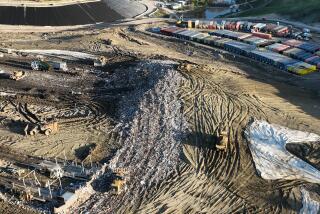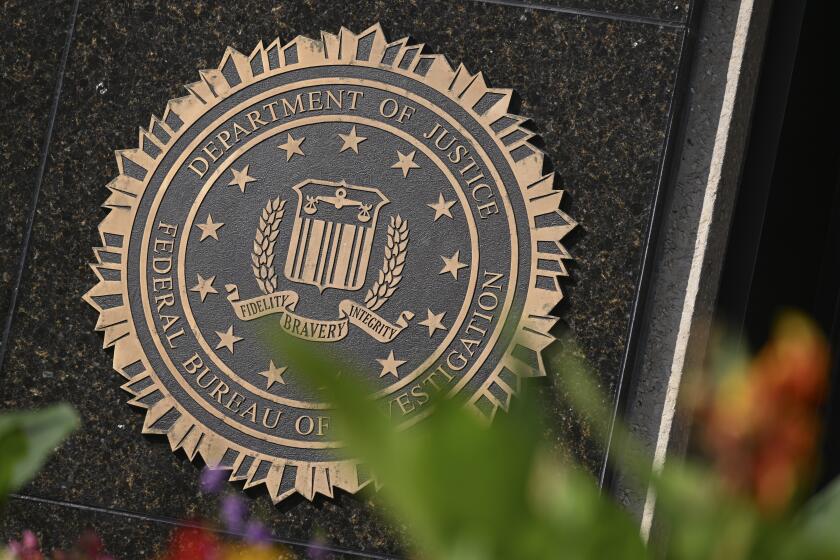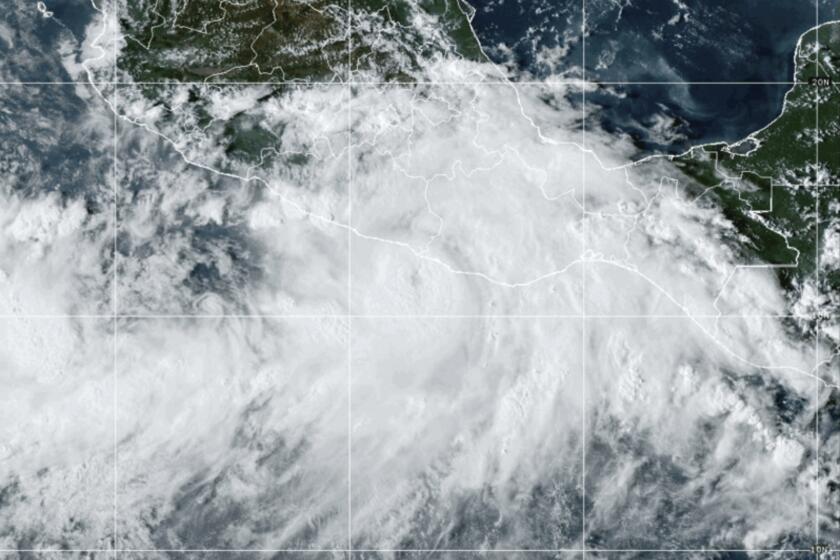Air Force insists it has Albuquerque fuel issue under control
KIRTLAND AIR FORCE BASE, N.M. — As environmental disaster sites go, it doesn’t look like much. A scattering of rusting wellhead covers and a machine noisily sucking hydrocarbon vapors from the earth scarcely hint at what has grown into a $50-million headache.
But nearly 500 feet beneath this spot, a plume of aviation gas and jet propellant that leaked undetected for decades from an Air Force fuel depot has sunk into the aquifer, drifting toward wells that help supply Albuquerque’s drinking water.
Base officials acknowledge that millions of gallons of fuel went missing, and although they don’t know exactly how close the leading edge of the plume is to the municipal water supply, they insist that there is little likelihood of contamination.
“The Air Force absolutely owns this problem, and we’re committed to remediating it,” said Col. Jeffrey Lanning, who recently assumed command of the 377th Air Base Wing, which operates Kirtland.
But neighbors are mistrustful, with some accusing the Air Force of soft-pedaling the extent of the leak.
“They aren’t telling the truth,” said Jim McKay, a former software engineer who criticizes the Air Force’s water-monitoring methods. “They aren’t trying to find out what it is. They are minimizing their efforts and reporting them as thorough.”
At a recent community meeting with Lanning, Marian Jordan, president of the Elder Homestead Neighborhood Assn., voiced her worries.
“If it does get into the water, what are we going to do?” she asked. “What are we going to drink? I want to know when you will have a plan, so I can tell the people.”
Lanning assured her that officials were still working on a contingency plan in case the plume reached the city’s drinking water, but added, “I don’t have a date for you.”
Established during World War II, Kirtland is home to Sandia National Laboratories and the Air Force Research Laboratory, a pararescue training school and a large underground nuclear weapons repository. It is a major source of jobs, with more than 20,000 employees — including 3,000 active-duty personnel — pumping an estimated $3 billion annually into the regional economy.
The base has seen its share of antiwar protests and complaints about jet noise and poor handling of radioactive materials from nuclear research, but in 2005 local business leaders and elected officials united to defeat a Defense Department proposal to shut the facility.
The problem dates to the late 1950s, when a fuel off-loading facility was built on the sprawling air base bordering Albuquerque’s Southeast Heights neighborhood. Pumps moved fuel from trucks and train cars via an underground pipe to large holding tanks.
At some point the buried pipe started leaking and the volatile fuel seeped deep into the sandy soil. Estimates range from 8 million to 24 million gallons. No one noticed until 1999, when fuel started pooling on the surface.
The facility was shut down and a handful of monitoring wells were dug to gauge the extent of the problem.
“What we found were holes in those large-bore underground pipes,” said Brent Wilson, the base’s chief civil engineer, while visiting the now-demolished facility in August. “It appeared at that time to be a limited leak localized to this area here.”
The Air Force installed soil vapor extraction units, which pull fuel vapors from the ground and burn them in an internal combustion engine.
In 2007, further testing revealed the fuel plume had reached groundwater and spread more than a mile to the north, across the base boundary. The biggest concern was a highly toxic chemical called ethylene dibromide. Known as EDB, it was used as an additive in leaded aviation gas until the Air Force switched to unleaded jet fuel the mid-1970s.
The base officials reported this spring that some fuel had dissolved into the aquifer, complicating cleanup efforts. The Air Force has a $50-million, performance-based contract with an engineering firm to fix the problem. It previously paid another contractor $10 million and has laid out $12 million for a new fuel depot a few hundred feet from the old one.
Bruce Thomson, a University of New Mexico engineering professor who chairs a civilian board advising base officials, suspects that the Air Force delayed drilling monitoring wells to the water table because it didn’t want to acknowledge the full extent of the problem. “I don’t think that was an oversight,” he said.
The good news, he said, is that 50 feet or 80 feet below the top of the water table, EDB is undetectable. “That provides a high degree of confidence that the [city’s] production well will not be contaminated,” he said.
Jim Davis, director of the New Mexico Environment Department’s resource protection division, said his agency directed the Air Force to drill 78 test wells to define the periphery of the fuel plume. Nine new wells are being sunk around the northeast corner of the plume to determine how close it is to the nearest city well.
In addition, two new soil vapor extraction units with 10 times the air-moving capacity of the originals should come online in November, Davis said. Further remedies will be needed to remove fuel that has dissolved in groundwater, he added.
“I think the biggest concern out there is fear,” he says, but he points out that his agency has plenty of experience in successfully cleaning up fuel leaking from gas station storage tanks.
Although Davis thinks it’s unlikely, should EDB-tainted groundwater reach the nearest city’s well field, those wells would be shut down or the water would be run through filters to remove the chemical.
The state is also working with the Air Force to craft a contingency plan in the event the EDB-laden plume does reach the city’s drinking water. “People are not going to drink contaminated water,” Davis said. “It simply won’t happen.”
More to Read
Sign up for Essential California
The most important California stories and recommendations in your inbox every morning.
You may occasionally receive promotional content from the Los Angeles Times.










